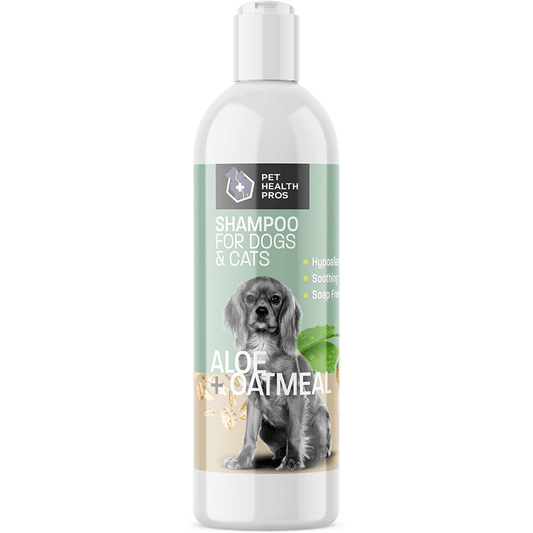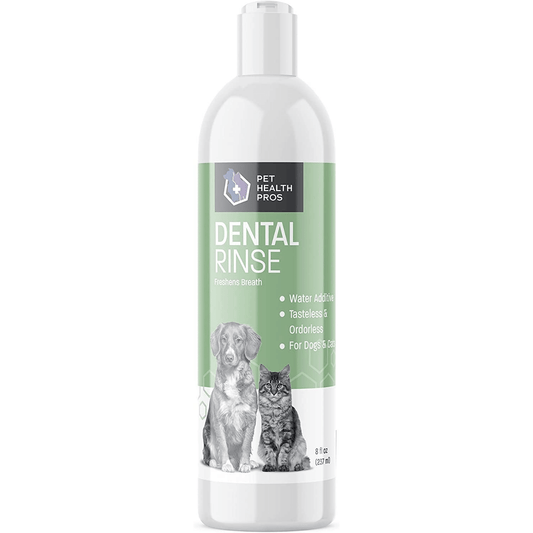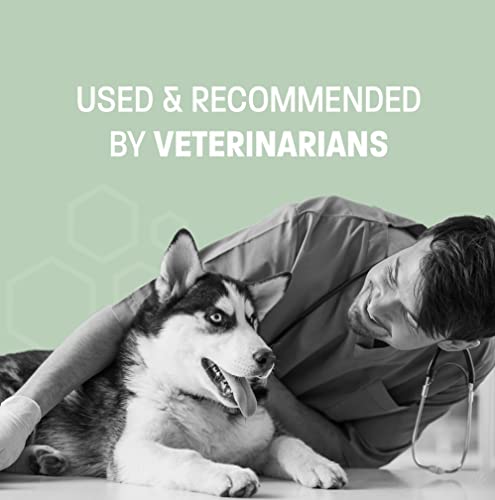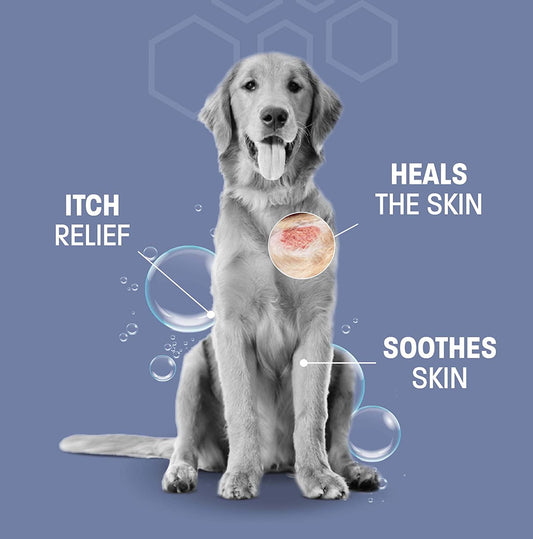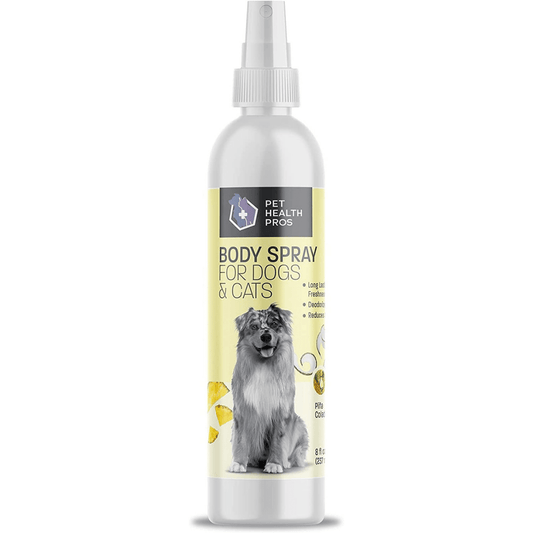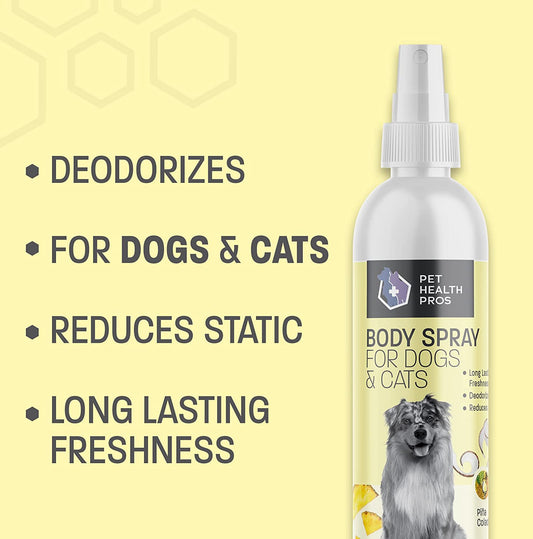Target the Source: Combining Dog No Chew Spray with Behavioral Tactics for Long-Term Results.
Chewing is a common problem with dogs and can be tough on pet owners. Here, we'll look at a comprehensive approach to dealing with a canine's unwanted chewing behavior. Mixing dog no chew spray with behavior solutions will help us tackle the immediate problem and its underlying causes.
Unwanted chewing often comes from several factors such as anxiousness, boredom, teething, or lack of training. It's vital to understand the root cause to select effective solutions. Dog no chew spray can act as a deterrent by making objects that shouldn't be chewed have an unpleasant taste or smell. This should redirect their focus to the right chew toys or activities.
Along with deterrents such as dog no chew spray, it's important to offer other options for chewing. Supply your dog with a variety of sturdy and interactive chew toys to satisfy their natural urge to chew and keep them mentally stimulated. Exercise and playtime regularly can help reduce destructive chewing and put a stop to boredom.
Another angle to consider is proper training and reinforcement. Teach your dog basic obedience commands such as "leave it" or "drop it" to discourage unwanted chewing behaviors. Continuity and positive reinforcement are essential when it comes to training dogs. Reward for good behavior and redirect when inappropriate chewing takes place to slowly shape their behavior patterns.
It's worth noting that seeking professional help might be beneficial if the unwanted chewing continues even after you've implemented these strategies. A vet or animal behaviorist can further review your dog's particular needs and suggest customized solutions.
Understanding the problem of pet chewing
To understand the problem of pet chewing, combine Dog No Chew Spray with behavioral solutions for lasting results. Explain the underlying causes of pet chewing behavior and emphasize the importance of addressing the root cause for lasting results.
Explaining the underlying causes of pet chewing behavior
Pets chew for many reasons. Teething is common in young pets and helps soothe their gums. Boredom or lack of mental stimulation can also cause chewing. Pets need activities like interactive toys or puzzles. Anxiety and stress can lead to chewing. This can be from changes in the environment or when owners are away. Certain breeds, like retrievers, have a higher tendency to chew because of their genetics. Improper training and lack of boundaries can also cause chewing.
Inappropriate chewing can harm your pet's health. Consuming foreign objects or electrical cords can cause injuries. Chewing on toxic substances can be life-threatening.
To address the root problem, get suitable chew toys. Provide mental stimulation with playtime and training exercises. Address any underlying anxieties or stressors.
Take action now! Invest time in understanding your pet's needs. Seek advice from professionals if necessary. Create a harmonious environment where both you and your pet can coexist happily, without worries about excessive chewing.
The importance of addressing the root cause for lasting results
Pet chewing can be a source of frustration. To get lasting results, it's essential to tackle the cause rather than just the symptoms. Uncovering why pets do it can lead to successful solutions for long-term behavioral change.
Reasons for chewing can include boredom, anxiety, teething, or seeking attention. We must understand the triggers for each individual pet. For example, providing interactive toys and puzzles can help with boredom, while tackling separation anxiety via desensitization exercises can help pets develop better ways to cope.
Training and discipline are essential for curbing chewing, but also creating a suitable environment. Remove tempting items and provide alternatives, plus regular exercise and socialization. This can help address underlying issues and reduce the likelihood of chewing.
Pro Tip: Everyone in the household must follow the same rules and provide consistent reinforcement. This avoids confusion and reinforces good behavior.
Addressing the root cause of pet chewing is the key for lasting results. By understanding why pets do it and meeting their needs, owners can have a peaceful relationship with their furry friends while saving their shoes.
Using dog no chew spray as a deterrent
To address unwanted pet chewing, combine dog no chew spray with behavioral solutions for lasting results. In this section, we will focus on using dog no chew spray as a deterrent. We will delve into the purpose and effectiveness of the spray, offer tips on choosing the right one, and provide step-by-step instructions on how to apply it.
Discussing the purpose and effectiveness of dog no chew spray
Dog No Chew Spray is a great way to keep pets from chewing on furniture, shoes, and other household items. Here are five key points to consider when discussing its purpose and effectiveness:
- Taste deterrent: It has a bitter or unpleasant taste that stops dogs from chewing.
- Training aid: It redirects pets' attention to appropriate toys.
- Safe and non-toxic: It's made with natural ingredients that are safe for pets.
- Versatile application: It can be used on various surfaces without causing damage.
- Long-lasting effect: When used consistently, it helps prevent destructive chewing over time.
Moreover, some brands may have added scents or other ingredients. A study by the American Kennel Club (AKC) showed that using this spray alongside positive reinforcement techniques significantly reduces destructive chewing in dogs. Dog No Chew Spray is a great way to manage this common issue and keep pets safe and happy.
Providing tips on choosing the right dog no chew spray
Choosing the right no chew spray for your pup is essential to prevent destructive chewing. Here are tips for making an informed decision:
- Find a spray that specifically stops dogs from chewing.
- Check the ingredients to make sure they are safe for your pet.
- Think about what you want to protect, as some sprays work better on certain surfaces.
- Read reviews and recommendations from other pet owners who've used the product.
- Ask a vet or pet behaviorist for advice.
It's worth noting that not all dogs will respond the same way to a no chew spray. Each pet is unique, so it could take a few tries to find the best option.
In addition, positive reinforcement techniques can help when using a dog no chew spray. This includes providing appropriate toys and redirecting their attention when they start chewing.
A fact: According to Animal Health Hospital, using a no chew spray can be effective for controlling destructive chewing habits in dogs.
Step-by-step instructions on how to apply dog no chew spray
Safeguard your possessions from your furry friend's sharp teeth with dog no chew spray! Here's a simple guide for use:
- Clean the surface. Before applying, get rid of any dirt or debris.
- Shake the bottle. Mix the ingredients well.
- Test a small area. Check for discoloration or damage.
- Apply evenly. Hold the bottle 6-8 inches away and cover all desired areas.
- Reapply as needed. Follow the manufacturer's instructions.
- Monitor your pet. Redirect their attention with toys or treats.
Extra details: Avoid spraying near eyes or sensitive areas. Try bitter apple flavor to discourage chewing. Give your favorite items the protection they need - try dog no chew spray today!
Incorporating behavioral solutions
To effectively address pet chewing, combining dog no chew spray with behavioral solutions is key. Highlighting the significance of behavioral training, suggesting positive reinforcement techniques, and offering professional advice on finding a reputable dog trainer are the sub-sections that will provide you with lasting results.
Highlighting the significance of behavioral training in addressing pet chewing
Behavioral training is key to address pet chewing. With effective solutions, owners can both look after their furry friends and create a peaceful living space.
It's essential to understand the impact of behavioral training. It helps pets know their boundaries and redirects their chewing to the right outlets. Providing them with suitable chew toys and having a positive reinforcement system, owners can train their pets to avoid destructive chewing.
In addition, training not only solves pet chewing but also increases the bond between pet and owner. It encourages communication, trust and understanding. With positive reinforcement techniques and consistent training, owners will notice a change in their pets' behavior.
Suggesting positive reinforcement techniques for modifying chewing behavior
Positive reinforcement is a great way to alter chewing habits. We can use techniques to promote good behavior and reduce bad habits. Here are some steps to get started:
- Detect the cause: Watch your pup's chewing patterns and find out what causes it. Is it boredom, anxiety, or teething? Knowing the root of the problem helps you pick the right technique.
- Change the focus: After figuring out the triggers, give your pup alternate activities or toys to redirect their chewing. Offer tough chew toys or puzzles to keep them busy and mentally stimulated.
- Reward the desired behavior: Whenever your pup chews an item they should, reward them with treats, praise, or a special toy. Positive reinforcement strengthens the link between correct choices and rewards, increasing the chance of repeating the behavior.
It's important to remember other factors like consistency and safety for successful modification of chewing habits. These techniques will help create a strong bond between you and your pet, while teaching them desirable behavior.
For improved results, adopt these additional suggestions with positive reinforcement:
- Watch them closely: Monitor your pup when they are likely to chew too much. This allows you to stop bad behavior early and direct their attention towards suitable items.
- Use bitter sprays: Spray objects that shouldn't be chewed with something that tastes bad. This can stop your pup from biting them again.
- Stimulate mentally: Have your pup participate in mentally taxing activities, like treat puzzles or obedience training. When they're mentally tired, they will be less likely to chew destructively due to boredom.
By using positive reinforcement techniques with these tips, we can shape our pup's chewing habits while forming a loving relationship between pet and owner. Remember, consistency and patience are key.
Combining the dog no chew spray and behavioral solutions
To effectively address unwanted pet chewing, combine dog no chew spray with behavioral solutions. This holistic approach offers a comprehensive solution by integrating both approaches. Discover the benefits of this holistic approach, and learn how to seamlessly combine dog no chew spray and behavioral solutions through a step-by-step guide.
Explaining the benefits of a holistic approach
A holistic approach to dealing with dogs chewing on furniture and belongings offers multiple advantages. By using a dog no chew spray alongside behavioral solutions, pet owners can tackle the real cause of this destructive behavior.
A no chew spray can be useful, but it's not enough on its own. To really get to the bottom of the problem, owners must combine the spray with behavioral solutions. These can include giving their dog durable chew toys or bones, to satisfy their urge to chew.
The main benefit of this holistic approach is that it produces long-lasting results. When owners address the real cause of the behavior, they can see lasting changes in their dog's behavior. This creates a happier and friendlier atmosphere for pets and their owners.
Furthermore, a holistic approach takes into account the overall well-being of the dog. Chewing can be due to anxiety or boredom, and by tackling these issues, owners can help enhance their dog's quality of life. This may include giving them mental stimulation through toys, or taking part in regular exercise and training.
Finally, this approach allows owners to better comprehend and communicate with their furry friends. By figuring out why dogs chew, owners can gain insights into their canine pal's needs and wants. This increased understanding builds a stronger bond between pet and owner.
Providing a step-by-step guide on integrating both approaches
Identity triggers. Observe what leads to your dog's chewing. Notice any patterns or objects they go for.
Introduce the no chew spray. Apply the spray to items your pup likes to chew. The taste will stop them from continuing.
Provide alternatives. Give your dog a variety of approved chew toys and bones to redirect their chewing. Replace forbidden objects with these.
Positive reinforcement. Give rewards like treats, praise, and playtime when they use the right toys. This encourages them to choose good options.
Consistency and patience. Be consistent with the spray, providing alternatives, and rewarding positive behavior. It may take time, so be patient.
To succeed, keep them away from forbidden areas. Supervise during training sessions to provide a safe environment.
Address any underlying causes like anxiety or boredom that may lead to excessive chewing. Seek professional help if needed.
Fact: The no chew spray and behavior solutions have worked for many dogs of all breeds and sizes. Pet owners have seen improvements and less damage caused by chewing. By following this approach, pet owners can give their furry friends a safe and enriching environment while curbing bad behavior.
Addressing specific scenarios or challenges
To address specific scenarios or challenges, such as separation anxiety-related chewing, teething puppies, and territorial marking behavior, combine dog no chew spray with behavioral solutions. This holistic approach tackles both the immediate deterrents and delves into the underlying causes, ensuring lasting results for your pet's unwanted chewing habits.
Dealing with separation anxiety-related chewing
Dogs with separation anxiety can exhibit destructive chewing behavior. However, here's a guide to help you out! First up, create a safe area where your pup feels secure and comfy. Supply chew toys to distract them from bad behavior.
After that, gradually increase your absences, and reward them when you leave. Also, engage them in physical activities before you depart - a tired pup is more likely to relax. If your efforts don't work, reach out to a professional.
Every dog is different, so it may take time to find what works best for your pet. Make sure to create a stress-free environment when you're away. Lastly, don't be afraid to seek help - many owners have gone through this. So, get started and watch your pooch become calmer even in your absence.
Providing solutions for teething puppies
No need to panic! Teething puppies can be tough, but we have solutions to make it easier. Check out the table for helpful advice:
| Solution | Description |
|---|---|
| Chew Toys | Give teething toys to redirect their chewing. |
| Frozen Treats | Frozen fruits or ice cubes can ease their sore gums. |
| Dental Chews | Specially designed chews to promote healthy teeth and gums. |
Be sure to supervise, and offer only safe items. Don't give household items as chew toys, as they can be dangerous. Start dental hygiene early on to help your pup form good habits.
Fun Fact: According to the AKC, teething usually starts at 3-4 months old, and can last up to 7 months.
Patience and consistent training are important during this stage. Offer solutions to meet your teething puppy's needs!
Addressing territorial marking behavior
Tame territorial marking with these strategies!
- Provide lots of activity and mental stimulation to reduce the need for marking.
- Neuter or spay pets - it has been proven to reduce territorial behavior.
- Set up a safe and secure environment with places only pets can access, to discourage marking.
- Utilize positive reinforcement techniques to redirect to more desirable actions.
- Consistency and patience are key.
- For extra help, clean marked areas with enzymatic cleaners. Odors won't linger and future marking will be discouraged.
Conclusion
Combine Dog No Chew Spray with Behavioral Solutions for Lasting Results - this offers a comprehensive approach to curbing pet chewing. Find the root cause. It can vary from teething in puppies to anxiety or boredom in adult dogs. Know why your pet chews, so you can use the right solutions. A Dog No Chew Spray is a great deterrent. It has a bitter taste to stop pets from chewing on furniture, shoes and other objects.
Keep using the spray and provide alternative toys and chew treats. The spray is just one part of the solution. Stimulate your pet mentally and physically. Exercise, interactive toys, puzzle feeders and positive reinforcement training will help. With the spray and the right behavior, you can create an environment that encourages appropriate chewing and discourages bad habits. Be consistent and patient, it takes time for pets to learn new behaviors and break old habits.
When using the spray, choose a product that's safe for pets and surfaces. Check for harmful chemicals or ingredients.
Frequently Asked Questions
FAQs:
1. Can I use the dog no chew spray alone to stop my dog from chewing?
No, just relying on a deterrent like the dog no chew spray may not provide lasting results. It is important to combine it with behavioral solutions to address the underlying causes of the chewing behavior.
2. What are some common underlying causes for unwanted pet chewing?
Unwanted pet chewing can be caused by factors such as boredom, anxiety, teething, lack of exercise, or a dental issue. Identifying the root cause is crucial in developing an effective solution.
3. How can I understand the underlying cause of my dog's chewing behavior?
Observing your dog's behavior patterns, consulting with a veterinarian, or seeking professional help from a dog behaviorist can help you gain insights into the underlying causes of your dog's chewing behavior.
4. Do I need to provide alternative chewing options for my dog?
Yes, providing appropriate chewing toys and treats can redirect your dog's chewing behavior and help satisfy their natural urge to chew. This will also ensure they are not simply switching to destructive chewing.
5. How can I discourage my dog from chewing on specific items?
Using a combination of dog no chew spray, consistent training, positive reinforcement, and providing alternative chewing options can help discourage your dog from chewing on specific items.
6. How long will it take to see results using a holistic approach?
The timeline for seeing results may vary depending on the individual dog and the underlying causes of their chewing behavior. Consistency, patience, and following a comprehensive approach are key to achieving lasting results.


